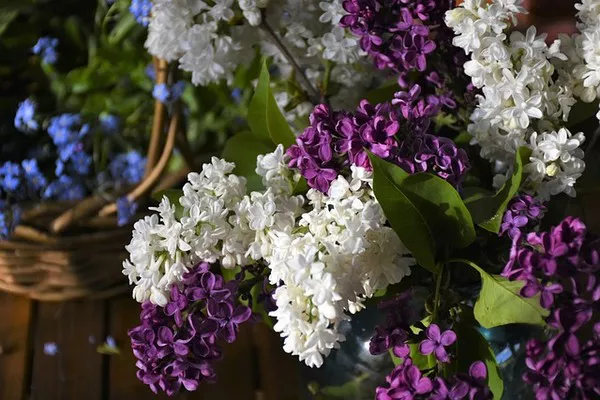From South America to Australian Suburbs: The Story of Jacarandas
Australia is once again awash in a sea of vibrant blue as jacaranda season takes root, unfurling its distinctive blossoms from the northern reaches to the southern tip of the continent. The Jacaranda tree, known for its resplendent purple flowers, has become synonymous with various Australian cities, adorning the avenues of Sydney, Melbourne, Adelaide, and Perth.
Notably, Grafton in New South Wales hosts an annual jacaranda festival, a testament to the deep appreciation for these blossoms. Herberton in Queensland has also made a name for itself through its seasonal jacaranda display, showcasing the enduring appeal of this tree.
Jacarandas have found a home in the heart of Australia, with significant plantings gracing the landscapes of botanical gardens, public spaces, and university campuses. Yet, it’s important to remember that the origins of these striking trees lie far from the shores of Australia, in South America. The 19th-century plant exchange networks introduced jacarandas to Australian soil, marking the inception of a colorful tradition.
The journey of the jacaranda in Australia can be traced back to botanist Alan Cunningham, who dispatched the first specimens of the tree from Rio to Britain’s Kew Gardens around 1818. It’s possible that jacaranda trees made their way to colonial Australia via Kew Gardens. Alternatively, Cunningham might have played a role in disseminating the tree during his later appointments in Australia, or through plant and seed exchanges.
Jacarandas have a rich history of being introduced across various imperial domains. The British, alongside other colonial powers like Portugal, and directly from South America, exported these striking trees to colonies worldwide.
While jacarandas can be grown from seeds, the favored propagation method in the 19th century was through cuttings, given the occasionally unreliable nature of seeds. However, this method proved less effective for jacarandas, which led to their scarcity in Australia. It wasn’t until the pioneering efforts of either nurseryman Michael Guilfoyle or gardener George Mortimer in 1868 that the successful propagation of jacarandas became a reality.
As these trees became more readily available, jacarandas started to grace Australian suburbs, bringing with them a burst of color. Brisbane claims the distinction of housing the earliest jacaranda tree in Australia, planted in 1864. However, the Sydney Botanic Garden’s jacaranda is dated to “around” 1850, and jacarandas were listed for sale in Sydney as early as 1861.
These initial plantings in parks and gardens captivated onlookers, but it was the later street plantings that truly catapulted jacarandas to popularity. Jacaranda-lined avenues, whether in Australia or around the world, are often associated with affluent suburbs. The streets of Subiaco and Applecross in Perth, Kirribilli, Paddington, and Lavender Bay in Sydney, Parkville and North Fitzroy in Melbourne, Mitcham, Frewville, and Westbourne Park in Adelaide, and St Lucia in Brisbane boast these extravagant displays.
The trend of planting trees along urban streets gained traction in the mid-19th century, particularly in burgeoning colonial towns and cities. In Australia, early streets featured a mix of native flora and exotic imported trees. However, the move towards uniform, single-species tree avenues gained momentum in the early 20th century, led by figures like Joseph Maiden, director of the Sydney Botanic Gardens.
Towards the end of the 19th century, deciduous trees, prized for their variety and openness to winter sunshine, grew in popularity. Jacarandas, with their stunning purple blooms, typically take about a decade to become established. The foresight in planning was evident, as newly planted jacarandas took between two and 14 years to produce their first flowers.
In some regions, such as Melbourne, jacarandas enjoyed popularity in post-World War I plantings but were gradually displaced by native trees after World War II. Despite localized pockets of admiration, the jacaranda doesn’t rank among the top 50 tree plantings in Melbourne.
In Queensland, 19th-century street tree planting was somewhat sporadic, with examples like the Eagle Street fig trees. It wasn’t until the early 20th century that street beautification efforts grew more organized, ushering in the era of jacaranda avenues in places like New Farm in Brisbane. The iconic plantings on the St Lucia campus of the University of Queensland date to the 1930s.
While beloved and iconic, jacarandas have posed challenges in some parts of Australia due to their invasive tendencies, thriving particularly in warm, dry climates. In South Africa, there are regions where planting jacarandas has been restricted due to their water demands and invasive nature, ironically mirroring the status of eucalyptus trees in the same country.
Jacarandas can hold cultural and historical significance, indicative of areas of past colonial domination. Nevertheless, their spectacular displays remain beloved where they’ve been introduced, often accompanied by myths and legends that transcend borders.
In the southern hemisphere, such as in Pretoria and Sydney, jacarandas bloom on university campuses during examination periods. These trees take on a symbolic role, with the first blossoms signaling the time to start studying, the falling blooms suggesting it may be too late, and a blossom landing on a student said to bring good luck.


